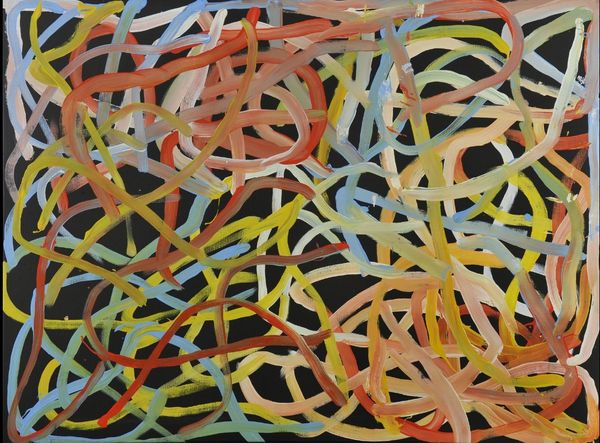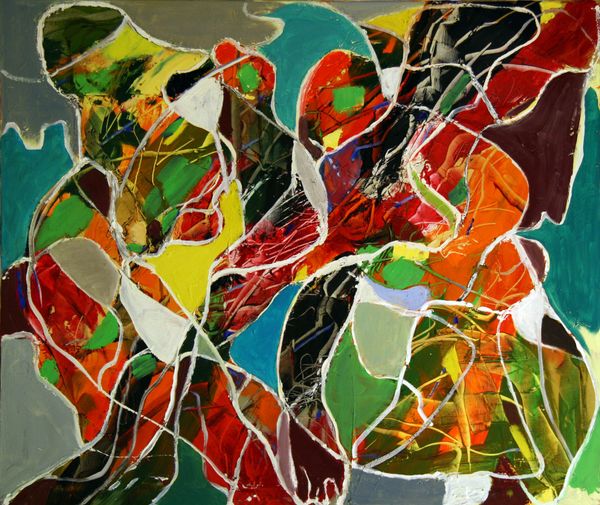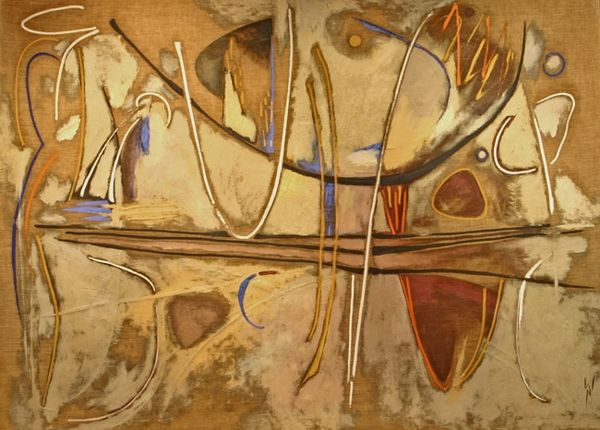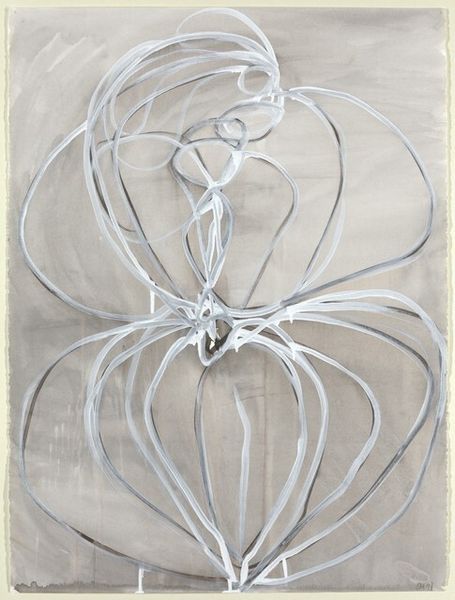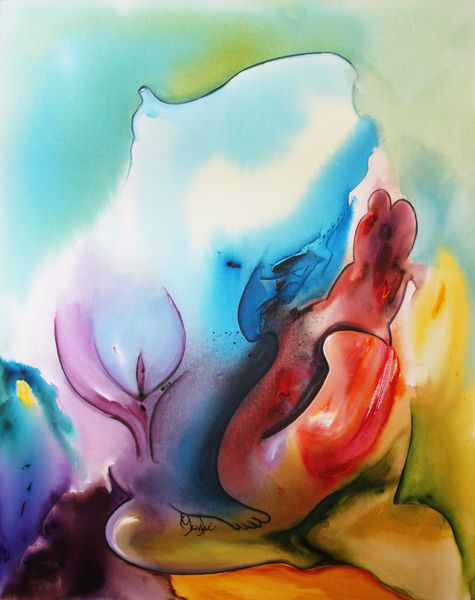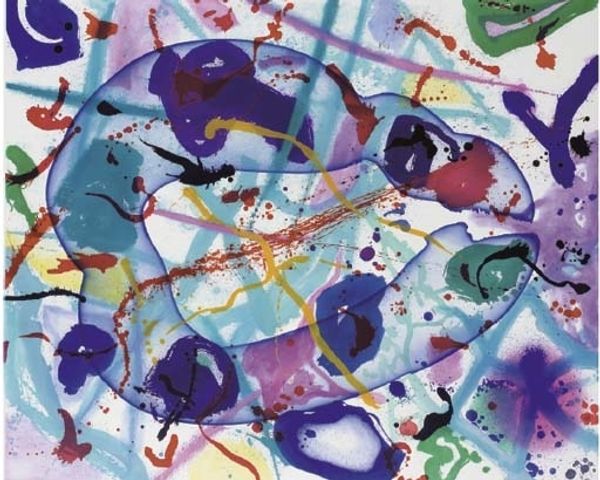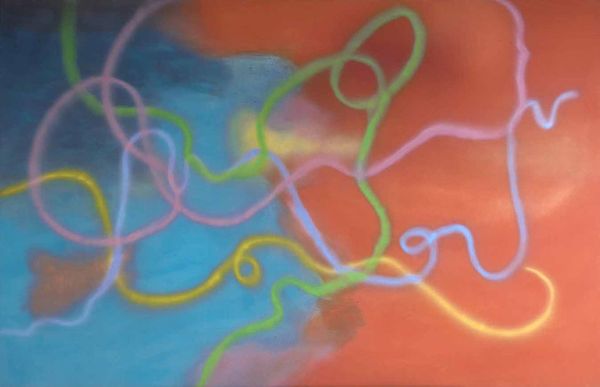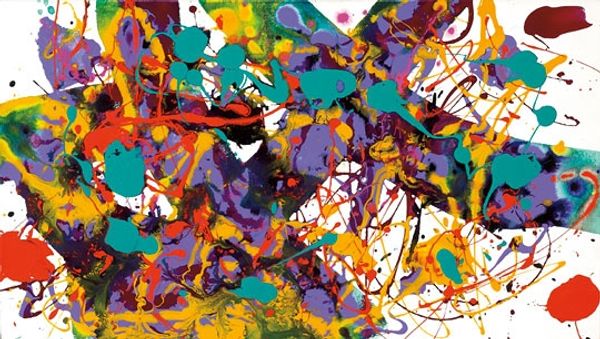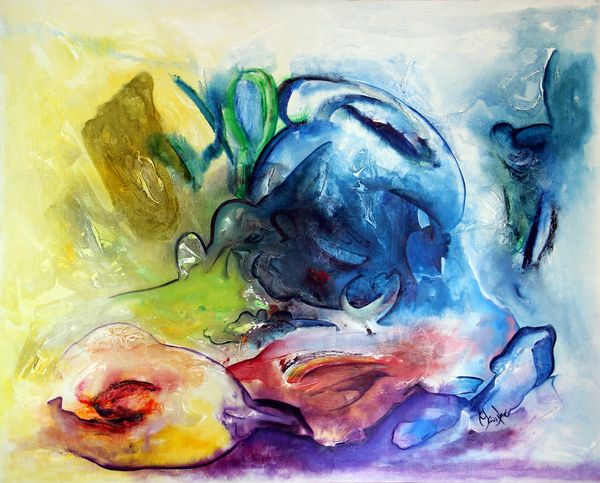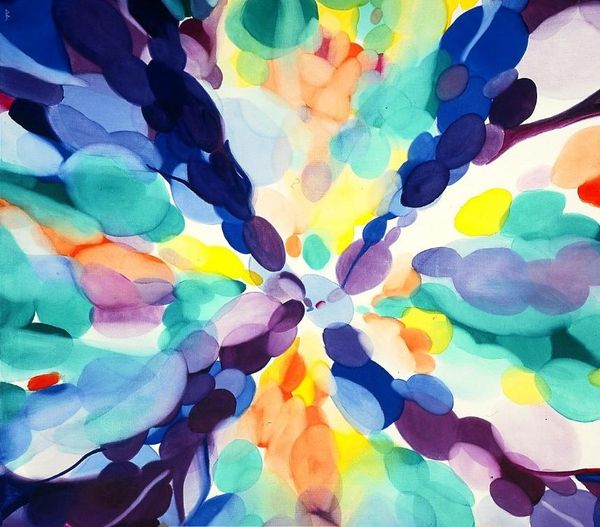
Dimensions: support: 2545 x 3615 mm
Copyright: © Bernard Frize | CC-BY-NC-ND 4.0 DEED, Photo: Tate
Curator: Bernard Frize's immense painting, "Spitz," presents us with looping lines that feel almost digitally rendered, despite their clear materiality. Editor: I'm immediately struck by its lightness, that pastel palette against so much white space. It's almost ethereal, but with a knotted energy. Curator: It's fascinating how Frize allows the paint to both define and dissolve the forms. The production of these ribbons surely involved careful layering and control of viscosity. Editor: It makes me think about gendered notions of craft and the historical devaluation of so-called decorative arts, of labor-intensive processes dismissed as merely ornamental, not serious art. Curator: Indeed. Frize's large scale challenges that hierarchy, demanding we consider the process, the labor, and the sheer volume of material. Editor: Ultimately, "Spitz" invites us to question not just the ‘how’ of its making, but also the ‘why’—why these forms, this scale, this tension between control and chance?
Comments
Join the conversation
Join millions of artists and users on Artera today and experience the ultimate creative platform.
tate 6 months ago
⋮
Frize lays his canvases on the floor, and works on them at speed. He is less concerned with the creation of a meaningful image, than the process of painting itself. In Spitz (‘sharp’ or ‘pointed’ in German) he laid out the lines in red crayon and then coated the canvas in a liquid resin. The paint was laid into the wet resin, with colours bleeding and merging as he worked. Having set the process in motion, therefore, Frize allowed it to determine the final composition. Gallery label, April 2007

